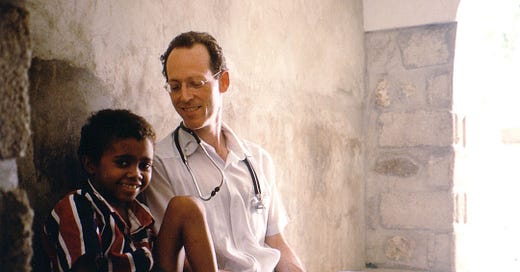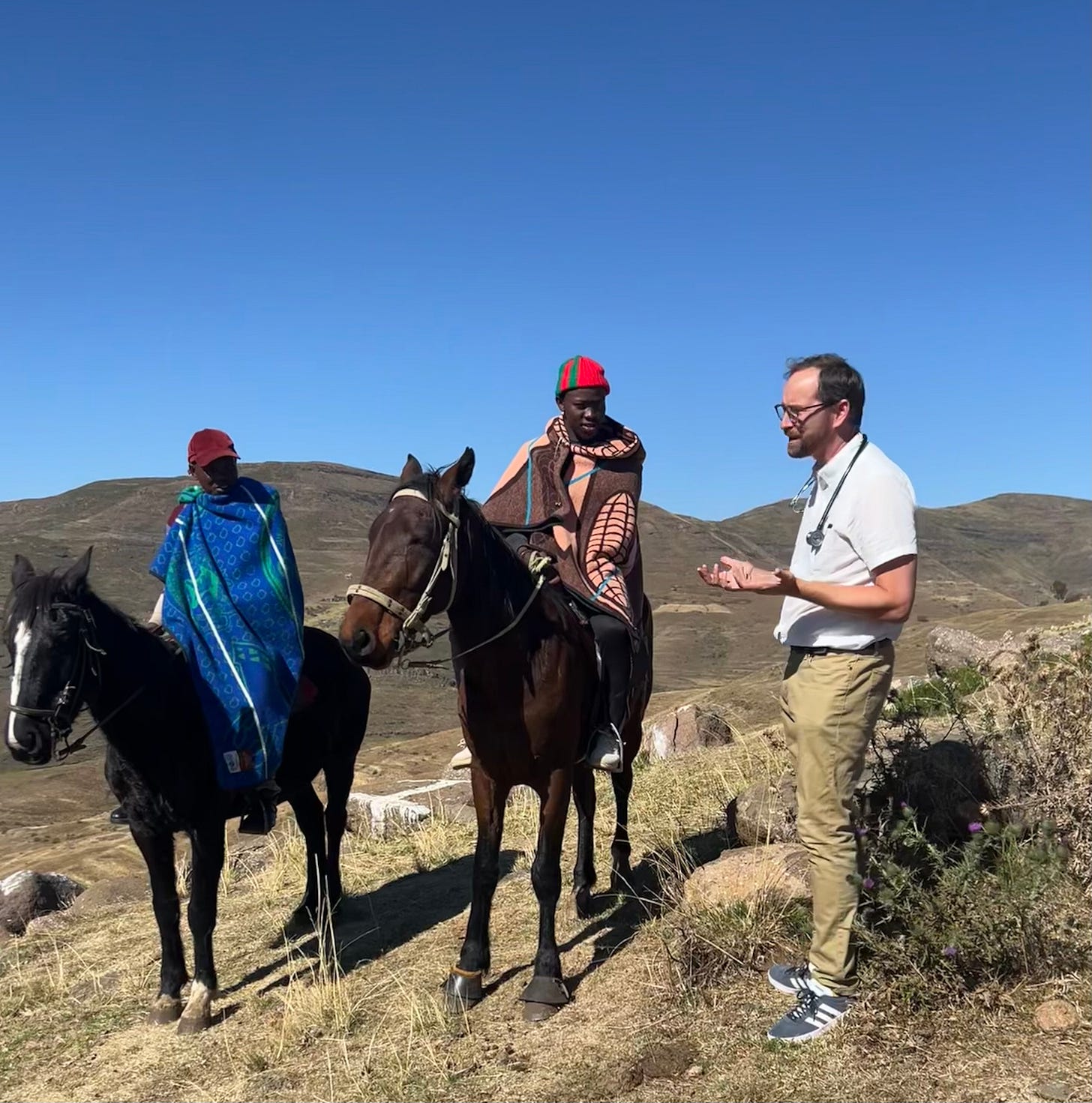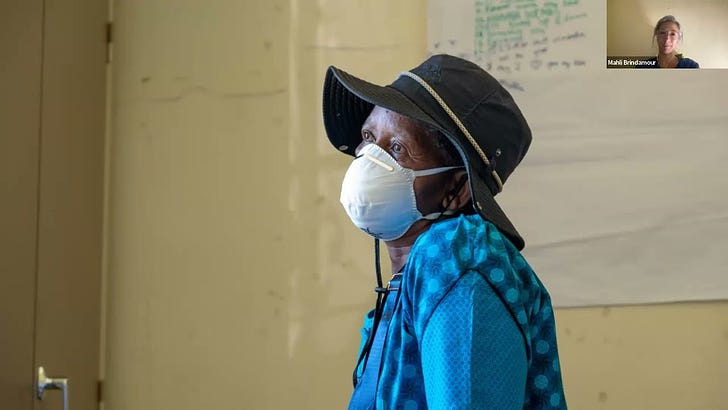Becoming Farmers
Adults are always asking kids what they want to be when they grow up. It’s boilerplate cross-generational conversation material. When I would look up from a book long enough to reply, the answer would always be the same. “I’m going to be a farmer and a writer. In the summer I’ll think up the stories on the tractor and in the winter I’ll write them down.”
It turned out that, while I may have some aptitude as a writer, I had next to none as a farmer. It’s a hell of a hard job, equal parts crop scientist, agronomist, chemist, heavy duty mechanic, environmental engineer and soothsayer. My brother Jim, who farms our family land, would attest that I was better at breaking the machinery than fixing it.
The call came for medicine instead, with a particular pull toward working with those most in need. I had some naïve and romantic notions about serving the sick where the need was greatest. Though they’ve changed shape over years of contact with what that means in real life, I guess I still do.
Partners and Paul
We’re con our way home now after six months in Lesotho, working with Partners In Health (PIH) at the Botšabelo MDR-TB hospital. Today, I’m taking some time to reflect on the idea behind the work we were involved in. Like most people, I heard about PIH because of co-founder Dr. Paul Farmer, a global leader in care for those who need it most. Dr. Farmer died suddenly in Rwanda in 2022 at the age of 62.
Neither Mahli nor I ever had the chance to meet Farmer, but many of our colleagues have shared their stories of working together. More importantly, we see his ideas, and the philosophy of care that he outlined in books like Pathologies of Power, demonstrated in the way our friends and colleagues approach patient care and advocacy.

Paul Farmer was an extraordinary human being, but a human being nonetheless, someone with brilliant insights and blind spots. As with any organization with a charismatic founder, there’s a risk for PIH of making him into a saviour or a saint, especially after his unexpected and early passing. WWPFD (What Would Paul Farmer Do) is too narrow a view for a mission that stretches across a dozen countries and hopefully decades into the future.
That said, Farmer brought together an inspiring vision, a remarkable team of people on a mission to “repair the world,” and clear ideas on how to make it happen. For today’s post, I present some of those ideas as a reflection of how Paul Farmer’s spirit of service plays out in that work, first in the unique nature of the PIH model, and then in the philosophical challenges presented to a world where poverty and oppression persist.

5 S’s Stuff, Staff, Space, Systems, and Social Support. This is the most nuts-and-bolts element of what makes PIH work well. Complex situations require a systematic approach. This may sound straightforward, but the difference with PIH is a commitment to providing the best possible care in a limited number of countries rather than spreading themselves too thin. I used to work in Mozambique in a rural hospital where we never had working oxygen tanks, couldn’t test blood sugars, and were constantly running out of the most basic antibiotics. At PIH Lesotho things aren’t perfect, we have occasional stockouts and blackouts, but there is a well-trained team, a fully stocked ICU, a reliable Oxygen plant (ref O2 plant story), and first line medications. Good people, good buildings and good supply chains are huge, but the real difference is in the last two S’s, which are best seen through another idea: accompaniment.
Radical Accompaniment
At the heart of what PIH does is accompaniment. It’s an idea borrowed from liberation theology (more on this in Part II), that “calls upon the privileged to live in solidarity with and give preferential treatment to people who are poor, ill, and marginalized.” PIH integrates this notion into its care model; among the organization’s first staff in Haiti in the 1980s were the “accompagnateurs,” health workers recruited from their communities to help people take treatment and make it to their appointments. That accompaniment helps to level differences in power and privilege and maintain the focus on what really matters: the health and wellbeing of patients. It also leads to better outcomes: accompanied patients are far more likely to stick with treatment and get better than those left to their own devices. This is true in Canada as well and is a model that should be explored anywhere that people struggle to access or follow through with care.
“To accompany someone is to go somewhere with him or her, to break bread together, to be present on a journey with a beginning and an end…There’s an element of mystery and openness….I’ll share your fate for awhile, and by ‘awhile’ I don’t mean ‘a little while.’ Accompaniment is much more often about sticking with a task until it’s deemed completed by the person or person being accompanied, rather than by the accompagnateur."
Paul Farmer, Address to Harvard Kennedy School
For a look at the accompaniment model in action, see Love and Consolation, an essay featuring the photos of Joshua Berson.
Beyond the individual patient, PIH as an organization accompanies providers to make sure they have the support and training they need to succeed. They also accompany governments to strengthen their ability to support functioning health systems. PIH can’t compare in size to government-sponsored aid programs like USAID or larger charities like MSF or the Red Cross. Instead, PIH strives to provide exceptional and innovative care that can then be scaled up by government and non-government actors. The decision to treat MDR-TB in Peru and HIV in Haiti when all the experts said it would fail revolutionized the world’s approach to these diseases.
The direct individual patient care of PIH is crucial, the effort put in to care for each patient is worth it because each person’s life matters. On top of that, the spillover policy effect and scaling up of new approaches is what creates global change for millions.
Doing hard things with friends
The name of the organization, Partners In Health, is no accident. PIH goes where things are hard, which means the work is hard as well. But it’s easier when done alongside people you enjoy and can rely on. From the leadership and management to the colleagues in the hospital and community, people are welcoming and approachable. That doesn’t mean people never butt heads, in fact I’ve seen some of the fiercest clinical arguments here, but they are focussed on making sure we follow another important maxim, as PIH Canada’s Mark Brender wrote in his tribute to Farmer: the patients are our bosses. It’s ok to push back, to ask for more, to debate and disagree. In fact, it’s expected, so long as what you’re pushing for is what’s best for the people we serve.
“With rare exceptions, all of your most important achievements on this planet will come from working with others—or, in a word, partnership.” - Paul Farmer, To Repair the World
More often, however, the experience working at PIH is one of finding joy in the struggles. We marvel at the beauty of the mountains while grumbling about the bumpy roads. We groan at the daily barriers to care, and work to find solutions instead of throwing up our hands in frustration. And we laugh, amused and delighted by the absurdity and poetry of interactions across language and culture. In the face of overwhelming need, it would be easy to get discouraged and disillusioned. Approaching this work with a spirit of camaraderie and a sense of humour, what Farmer called “doing hard things with friends,” is what keeps the PIH team fighting the good fight against tremendous odds.
PIH Stays. Those friendships don’t happen overnight, it’s a product of individual and institutional attitudes and relationships built up over years. When first looking into working with PIH, we were discussing which places would be the best fit. I asked if any of the projects were close to wrapping up. The answer was, “we don’t do that.” The exact nature of the involvement will necessarily shift over time, but when PIH decides to work in a country, it’s for the long haul. From Haiti to Peru, Kazakhstan to Sierra Leone, through changes in governments, natural disasters and conflicts. As Farmer described in Haiti After the Earthquake, the ability of PIH to respond quickly and effectively in response to the 2010 Haiti earthquake was the fact that they were already there. They had the relationships and the knowledge of local context to be able to help where it was needed right away.
These are some of the practical differences in the PIH model that stem from Farmer’s philosophy. In Part II I will explore that philosophy and the challenge it poses to those who would try to build a healthier world.









Thanks for this. Accompaniment sounds a little like the ‘resilience’ work my daughter is doing in the climate and ecology world. Work with people toward what they need within the context of their homes and lives. Interesting work. Thanks for doing it.